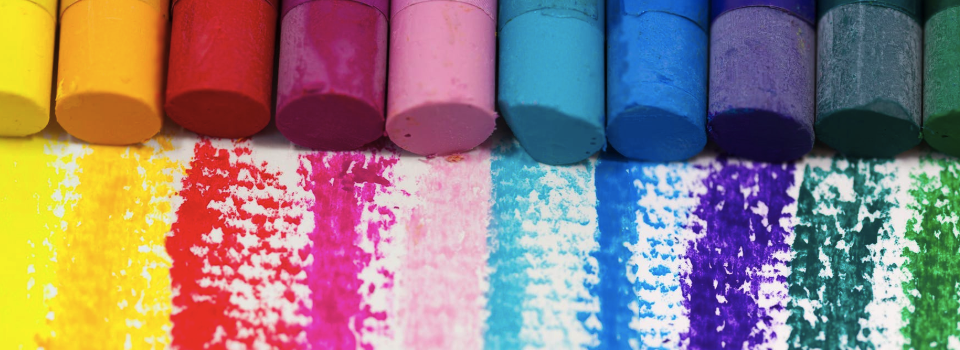Macs aren’t exactly known for being easy to customise, but if you’re craving a more personalised experience there there’s a few ways that you can tweak your Mac’s look and feel, to better match your own unique style.
In this article, I’ll be sharing 4 quick and easy ways to change your Mac’s appearance, without having to download any third party applications.
1. Create a wallpaper slideshow
This is something the majority of Mac users will already be familiar with, but it’s still one of the most effective ways to give your laptop that personal touch. If you can’t choose just one image, then you could even turn your Desktop into a slideshow that updates with a new image automatically, based on a schedule set by you.
To change your Mac’s wallpaper to a single, static image:
- Select the ‘Apple’ logo from your Mac’s menu bar.
- Navigate to ‘System preferences > Desktop & Screen Saver.’
- Make sure the ‘Desktop’ tab is selected.
- macOS will suggest a selection of stock wallpapers, but if you want to use your own image, then give the little ‘+’ icon a click.
- In the subsequent window, navigate to the image that you want to use, and then click ‘Choose.’
If you’re struggling to choose just one image, then you can use multiple images. To create this slideshow effect:
- Create a new folder containing all the images that you want to use in your slideshow.
- Open your Mac’s ‘System preferences > Desktop & Screen Saver > Desktop’ menu.
- Click the little ‘+’ icon.
- Navigate to the folder that you just created, and then click ‘Choose.’
- This folder should appear in the left-hand menu; select it.
- Select the ‘Change picture’ checkbox.
- Open the accompanying dropdown menu, and then choose how often this image should update, ranging fr0m every 5 seconds, to once per day.
Your Desktop will now display the first image in the series, and it should update with a new image each time the interval has elapsed.
2. Change the system colour scheme
Depending on the wallpaper you select, you may find that your Mac’s default colour scheme clashes with your background – or maybe you simply fancy a change!
You can alter the colour of several key parts of your Mac’s user interface, including its buttons, menus, windows, and the color that’s used for highlighted text, by navigating to ‘System Preferences… > General.’
To change the colour that’s used for your Mac’s buttons, menus and windows, open the ‘Appearance’ dropdown and choose between ‘Blue’ or ‘Graphite.’

You can also give the menu bar and Dock a darker look, by selecting ‘Use dark menu and Dock.’
Finally, you can change the colour that’s used for highlighted text, by opening the ‘Highlight color’ dropdown and either choosing from the preset colours, or selecting ‘Other…’ and then making your own selection from the colour picker. Note that this colour highlight may not be used across all third party applications and webpages, but it will be used throughout Apple’s suite of apps, and across the macOS operating system.
3. Create custom folder icons
By default, every single folder uses exactly the same blue folder icon.
![]()
If you’re craving a more personalised experience, or you simply want to make it easier to distinguish between different folders, then you can replace a default folder icon, with any image that’s stored on your Mac.
You can use your own photos, images or graphics as icons, or you could download an icon set from a third party website, such as IconArchive or InterfaceLIFT.
Once you have one or more icons that you want to use:
- Control-click the image that you want to use as your new icon, and then select ‘Open with > Preview.’
- Select ‘Edit > Select All’ from the Preview toolbar.
- Select ‘Edit > Copy’ from the toolbar, or use the ‘Command + C’ keyboard shortcut.
- Open a Finder window and navigate to the folder where you want to use your new icon.
- Control-click the folder and select ‘Get Info.’ This opens the ‘Get Info’ window.
- In the upper-left corner, click to select the folder’s icon. It should now be highlighted blue.
- Paste your new icon over the current icon, using the ‘Command + V’ keyboard shortcut.
- Close the ‘Get Info’ window. Your folder should now be using the brand new icon.
- Rinse and repeat for every folder where you want to use a custom icon.
4. Change the date and time format
Your Mac’s menu bar displays the date and time by default, but you can get this information in a range of formats, including as an analog clock, or you may want to be more specific and get the current time, right down to the exact second.
To test out some different date and time options:
- In your Mac’s menu bar, give the date and time a click.
- Select ‘Open Date & Time Preferences…’
- Select the ‘Clock’ tab.
Here, you can choose from the following:
- Digital. Displays the time in the hour:minute format.
- Analog. Displays a clock icon, with hands that indicate the current time.
- Display the time with seconds. Displays the time in the hour:minute:seconds format.
- Flash the time separators. When this option is selected, the ‘:’ symbol(s) will flash once every second.
- Use a 24 hour clock. This is the difference between displaying 2 o’clock in the afternoon as 14:00, or 2:00pm.
In this menu, you can also choose whether to ‘Show the day of the week’ and/or ‘Show date’ in your Mac’s menu bar. This can be useful if you tend to lose track of what day it is!






Add Comment